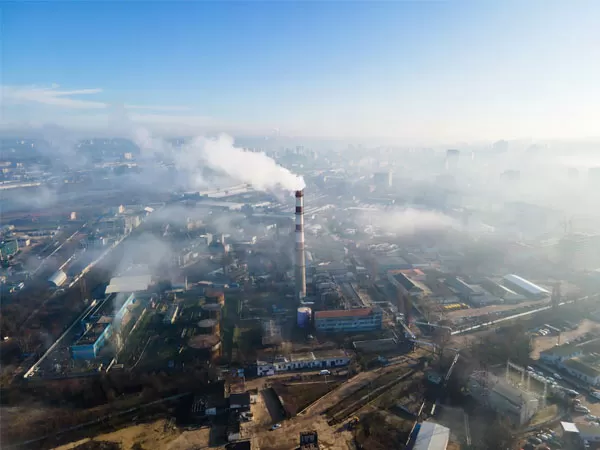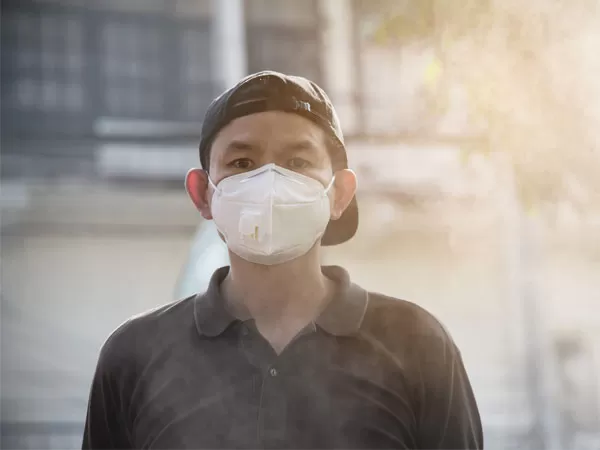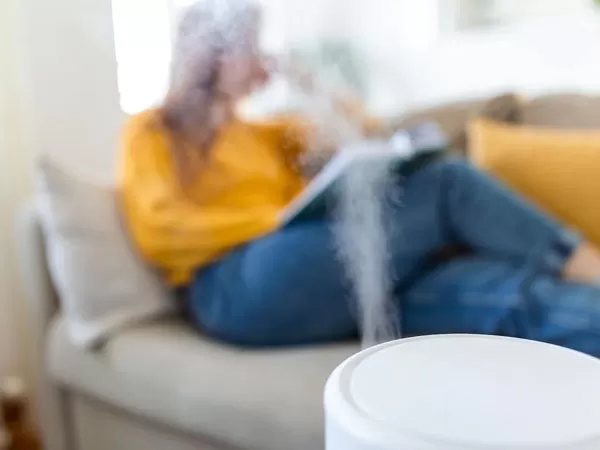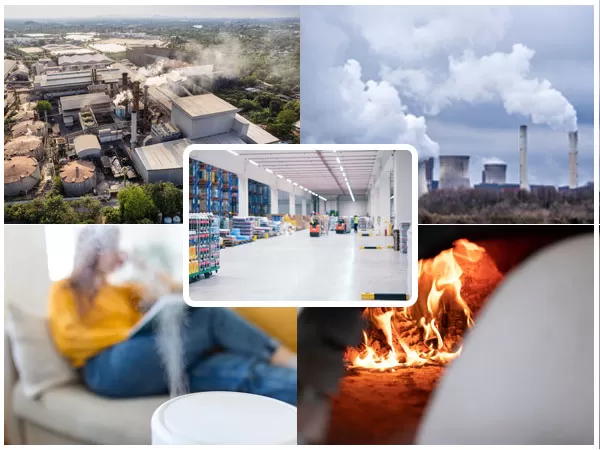Don’t Let Air Pollution Steal Your Breath Away! Discover the Causes and Solutions Now

Air Pollution: Causes, Effects, and Prevention
In air pollution, substances that are harmful to humans are introduced into the atmosphere. This includes particulate matter (PM), carbon monoxide (CO), sulfur dioxide (SO2), nitrogen oxides (NOx), volatile organic compounds (VOCs), and ozone (O3). It can cause respiratory diseases, heart attacks, strokes, lung cancer, asthma, bronchitis, and emphysema. It can also cause chronic obstructive pulmonary disease, pneumonia, and other conditions. In fact, it causes about 7 million deaths each year worldwide.
According to the World Health Organization (WHO), outdoor air pollution kills over seven million people per year. Indoor air pollution from solid fuels used for cooking and heating contributes to nearly three million deaths annually.
- Outdoor air pollution comes from many sources, but vehicle emissions are the largest contributor. Vehicle exhaust contains carbon monoxide, hydrocarbons, nitrogen oxides, particulate matter, lead, arsenic, mercury, cadmium, and other toxic chemicals.

- Indoor air pollutants come from household products like candles, incense, paints, cleaning supplies, furniture, carpets, and tobacco smoke. They include formaldehyde, benzene, asbestos, radon, carbon dioxide, and pesticides.

Various types of air pollutants

There are many types of air pollution, but they can be divided into two major categories: primary and secondary. Primary air pollution comes from natural sources like volcanoes, forest fires, and dust storms. Secondary air pollution is created by manmade sources like vehicles, power plants, and industry.
Find Out the Top Causes of Air Pollution and How You Can Prevent It
The three major components include particulate matter, ozone, and carbon monoxide. PM is composed of solid particles suspended in the air. Ozone is a gas consisting of three oxygen atoms bonded together. Carbon monoxide is a colorless, odorless, tasteless, non-poisonous gas.
Other causes include:
- Combustion of fossil fuels
- Emissions from industrial processes
- Pollution in the Indoor Environment
- The wildfires
- The decomposition process of microbes
- The transportation industry
- Burning garbage waste in the open
- Deconstruction and construction
- Activity in the agricultural sector
- The use of chemicals and synthetic materials
How does it affect our health?

There are several ways that it can cause harm to your body. One way is through the lungs. When particles enter the lungs, they can irritate the lining of the respiratory tract and lead to inflammation. This causes coughing, wheezing, shortness of breath, and other symptoms. Another effect on the lungs is that it can make them more susceptible to infections. Airborne bacteria and viruses can easily attach themselves to the mucous membranes of the lungs, causing colds, flu, bronchitis, pneumonia, and even tuberculosis. In addition, it can have long-term effects on lung function. Children who live near busy roads or factories may experience decreased lung capacity as they get older.
Another way that it affects your health is through your heart. Exposure to high levels of air pollutants can increase blood pressure and stress your cardiovascular system. This can lead to stroke, heart attack, and congestive heart failure. Pollution can also triggeratherosclerosis, a condition where plaque builds up inside arteries. Plaque buildup restricts blood flow and increases the risk of heart attacks.
Finally, it can damage your brain. Studies show that children who live in an area that has higher levels of air pollution have lower IQ scores than those who were not exposed to this type of pollution. Other studies have shown that people with Alzheimer’s disease tend to live closer to major roadways. These findings suggest that this pollution could play a role in the development of dementia.
Control the damage caused by Air Pollution
There are several ways to reduce your exposure to indoor and outdoor air pollution. First, avoid burning wood indoors. Second, use natural ventilation methods instead of forced-air systems. Third, choose low-emission vehicles. Fourth, turn off your car engine when not needed. Fifth, install a high-efficiency furnace filter. Sixth, replace old appliances with energy-efficient models. Seventh, clean your home regularly. Finally, limit smoking and secondhand smoke.
- The biggest contributor to air pollution is the burning of fossil fuels. This includes gasoline, diesel fuel, natural gas, and coal. These are non-renewable resources that we use to power our vehicles, heat our homes, and generate electricity. We need to reduce our dependence on these polluting sources if we want to live in a cleaner world.
- Electric cars produce no emissions at all. They emit nothing but clean energy from their batteries. Electric car owners tend to be happier than those who own gasoline-powered cars. If you’re looking to go green, consider buying an electric car today!
- Solar energy has been around since ancient times. In fact, it was even mentioned in the Old Testament. However, it wasn’t until 1879 that Scottish engineer Charles Fritts invented the first working model of what would later become known as the photovoltaic cell. Ever since then, solar technology has improved drastically, and now it’s possible to create panels that are able to convert sunlight into electricity. And the best part? Solar energy doesn’t cost any money to operate!
- You can buy inexpensive carbon filters at any hardware store. These filters remove particulate matter from the air. You can place them over vents or windows to reduce the amount of dust entering your home.
- Smoking inside your house or apartment is not only unhealthy but also bad for the environment. Smoke contains toxic chemicals that pollute the indoor air. Instead, try to smoke outside.
Air Pollution Linked To Diabetes Risk
The link between this pollution and diabetes risk has been known for some time now. A recent study published in the journal Environmental Health Perspectives shows that people who live in areas with high levels of this pollution are at greater risk of developingtype 2 diabetes.
Researchers fromHarvard Universitylooked at data from over 1 million adults and found that those who lived in counties with higher levels of fine particulate matter (PM2.5) were at increased risk of developing type 2 DM. They also found that this association was stronger among women than men. This finding is consistent with previous research showing that PM2.5 exposure can cause insulin resistance.
In addition to the effect of PM2.5 on diabetes risk, the researchers found that the risk of obesity and hypertension was also linked to air pollution. These findings suggest that air pollution may play a role in the development of these conditions.
Talking about Delhi’s Air Pollution: What Delhi government is doing about it?
Delhi’s air quality has been deteriorating since 2015. In fact, the city was recently placed among the world’s 10 most polluted cities. This is due to the rapid increase in population and industrialization that have not kept pace with environmental regulations.
The primary cause of Delhi’s poor air quality is vehicular emissions from cars, trucks, two-wheelers, and construction equipment. These vehicles are not well maintained; they emit harmful gases like carbon monoxide, sulfur dioxide, nitrogen oxides, and fine particulate matter. Other sources include brick kilns located near residential areas and industries that burn coal, wood, and other fossil fuels.
To improve air quality in Delhi, the government needs to enforce stricter emission standards for vehicles and implement better enforcement mechanisms. They should also encourage public transport use over private vehicle ownership. Another solution would be to ban the burning of solid waste in open-air facilities. Finally, the government can take measures to reduce the number of vehicles on the road.





